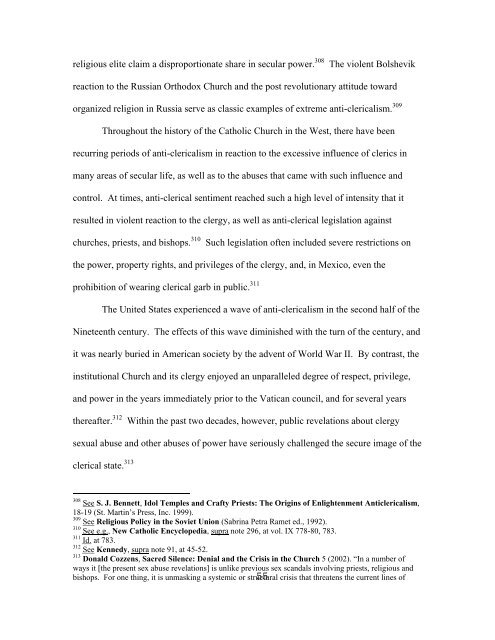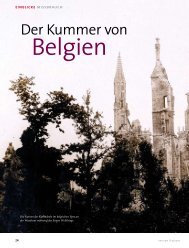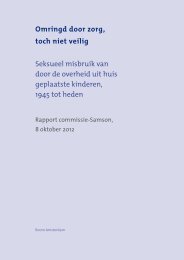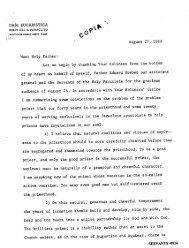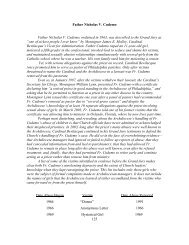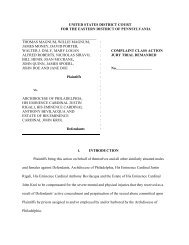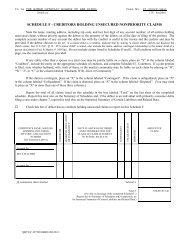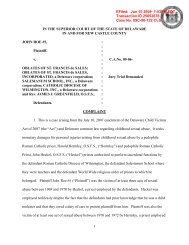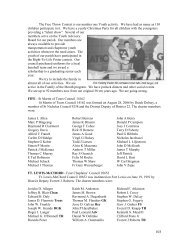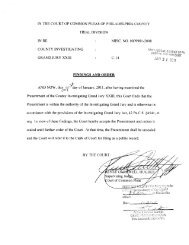1 1 Catholic Clergy Sexual Abuse Meets the Civil Law by Thomas P ...
1 1 Catholic Clergy Sexual Abuse Meets the Civil Law by Thomas P ...
1 1 Catholic Clergy Sexual Abuse Meets the Civil Law by Thomas P ...
Create successful ePaper yourself
Turn your PDF publications into a flip-book with our unique Google optimized e-Paper software.
eligious elite claim a disproportionate share in secular power. 308 The violent Bolshevik<br />
reaction to <strong>the</strong> Russian Orthodox Church and <strong>the</strong> post revolutionary attitude toward<br />
organized religion in Russia serve as classic examples of extreme anti-clericalism. 309<br />
Throughout <strong>the</strong> history of <strong>the</strong> <strong>Catholic</strong> Church in <strong>the</strong> West, <strong>the</strong>re have been<br />
recurring periods of anti-clericalism in reaction to <strong>the</strong> excessive influence of clerics in<br />
many areas of secular life, as well as to <strong>the</strong> abuses that came with such influence and<br />
control. At times, anti-clerical sentiment reached such a high level of intensity that it<br />
resulted in violent reaction to <strong>the</strong> clergy, as well as anti-clerical legislation against<br />
churches, priests, and bishops. 310 Such legislation often included severe restrictions on<br />
<strong>the</strong> power, property rights, and privileges of <strong>the</strong> clergy, and, in Mexico, even <strong>the</strong><br />
prohibition of wearing clerical garb in public. 311<br />
The United States experienced a wave of anti-clericalism in <strong>the</strong> second half of <strong>the</strong><br />
Nineteenth century. The effects of this wave diminished with <strong>the</strong> turn of <strong>the</strong> century, and<br />
it was nearly buried in American society <strong>by</strong> <strong>the</strong> advent of World War II. By contrast, <strong>the</strong><br />
institutional Church and its clergy enjoyed an unparalleled degree of respect, privilege,<br />
and power in <strong>the</strong> years immediately prior to <strong>the</strong> Vatican council, and for several years<br />
<strong>the</strong>reafter. 312 Within <strong>the</strong> past two decades, however, public revelations about clergy<br />
sexual abuse and o<strong>the</strong>r abuses of power have seriously challenged <strong>the</strong> secure image of <strong>the</strong><br />
clerical state. 313<br />
308<br />
See S. J. Bennett, Idol Temples and Crafty Priests: The Origins of Enlightenment Anticlericalism,<br />
18-19 (St. Martin’s Press, Inc. 1999).<br />
309<br />
See Religious Policy in <strong>the</strong> Soviet Union (Sabrina Petra Ramet ed., 1992).<br />
310<br />
See e.g., New <strong>Catholic</strong> Encyclopedia, supra note 296, at vol. IX 778-80, 783.<br />
311<br />
Id. at 783.<br />
312<br />
See Kennedy, supra note 91, at 45-52.<br />
313<br />
Donald Cozzens, Sacred Silence: Denial and <strong>the</strong> Crisis in <strong>the</strong> Church 5 (2002). “In a number of<br />
ways it [<strong>the</strong> present sex abuse revelations] is unlike previous sex scandals involving priests, religious and<br />
bishops. For one thing, it is unmasking a systemic or structural 55 crisis that threatens <strong>the</strong> current lines of


